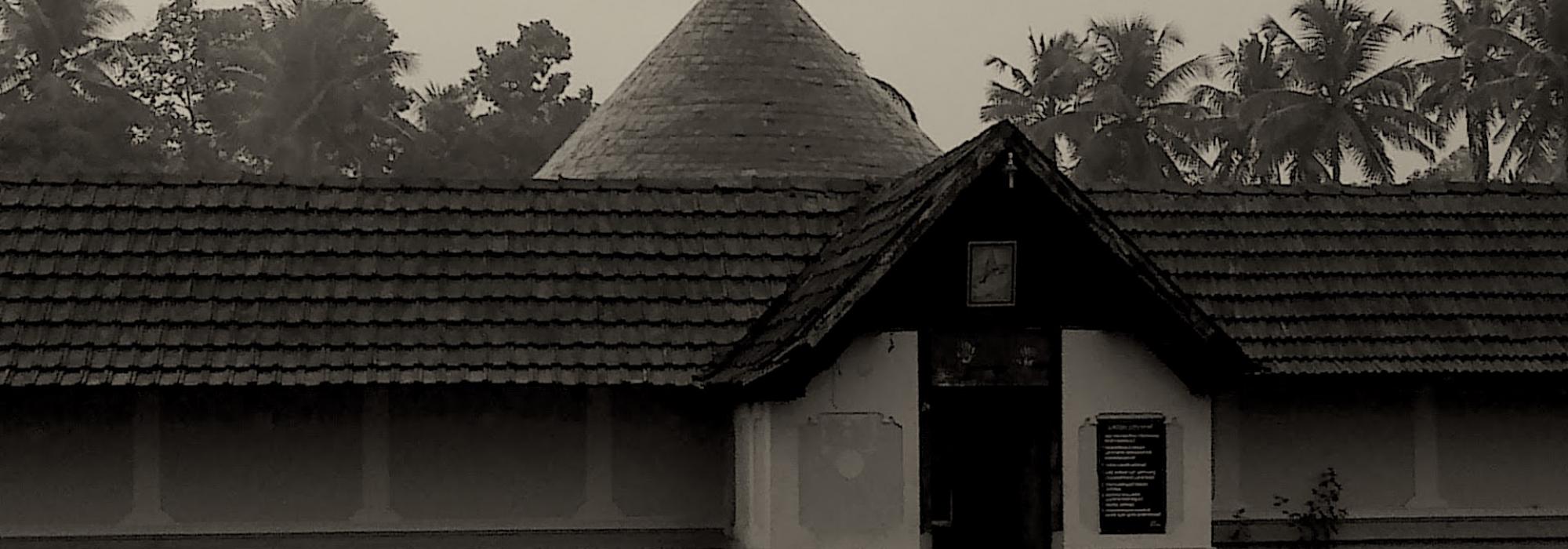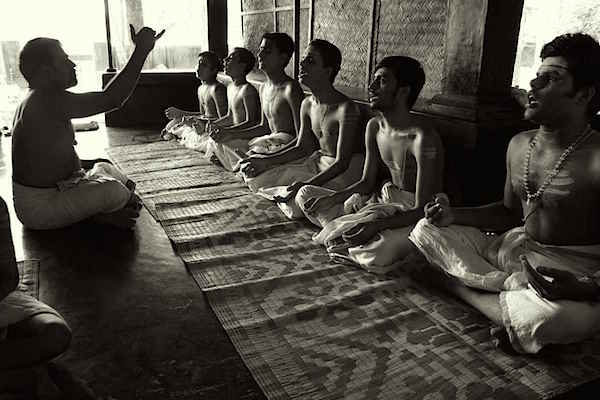Apart from writing independent works like the Outlines of Indian Philosophy and Essentials of Indian Philosophy, Hiriyanna edited several difficult Sanskrit books on Vedanta and made them easily accessible to readers by providing explanatory notes. Three such notable works include (1) Vedantasaara[i] (2) Naishkarmya Siddhi[ii] (3) Ishtasiddhi[iii]. Even among these three, Hiriyanna’s preface to Ishtasiddhi (a very technical and difficult work that deals with Khyaativaada) in English is an independent work by itself.
Hiriyanna has also translated the Isha, Kena and Katha Upanishads into English along with the commentary of Shankaracharya.
Hiriyanna’s range, taste and sweep of English literature was no less than that in Sanskrit. Indeed, had he not been a Sanskrit professor, he could’ve as well been an English professor. He displayed great enthusiasm for Shakespeare and Wordsworth among others. In literary discussions, he would quote Wordsworth’s sonnets from memory.
This apart, he studiously read the weekly “Literary Supplement” of the “London Times” and similar authoritative English literary periodicals. He systematically made scrupulous notes of the opinions of noted literary critics and philosophical points made therein. If he read a review of an important work, he would clip that review essay and file it together with the respective work.
Simplicity and Dignity
It’s beyond my capacity to describe the true reaches of Hiriyanna’s scholarship and the dignity of his personality. What was most notable about him was his absolute adherence to meticulousness.
His handwriting was beautiful, in English and Devanagari. Its imprint was clear and natural, and was a delight to read. His corrections to manuscripts were alike: there was nary a strikeout. As were his letters. Well-formed letters. Unostentatious language. His answers to questions were to the point. He would use the sparsest number of words in easily comprehensible sentences to reply to questions on difficult subjects.
In the library at his home, he kept only the most carefully chosen books. Once every year, he would take stock of his entire book collection, examine each book carefully and would give away those he deemed were second and third grade.
His other great quality was neatness. Be it a book, chair or desk, everything had to be tidy. He could normally be found in the front room of his home. These were the items typically present there: a lovely strawmat, a sloped desk, a bench, a small stool, a recliner. Hiriyanna would sit normally sit on the strawmat and do his study and writing on the sloped desk. Behind him, mounted to the wall was a cupboard divided into five or six shelves. It contained copies of his handwritten material in neatly bound files.
He would seat guests on the recliner and would himself sit on the stool, a protocol he never broke throughout his life. If more than one guest arrived, the others would sit on the bench.
Behind this front room was his personal library. That too, was fastidiously tidy. Not a single speck of dust. He would wipe it clean with his own hands.
Punctuality
Hiriyanna’s punctuality is truly praiseworthy. When I visited his home for the first time on a Monday morning at eight, he was waiting by the gate at the appointed time with a pencil and notebook in his hand. When he saw me, he led me to that room, offered me a seat first and sat down only after I did. When I sat down on the strawmat—my preferred seat—he did likewise. Immediately, he began:
“You might want to rethink this usage (you have made) in light of the usage given in X book, Y page, Z line number…”
Pleasantries, greetings and the rest came later. The work on hand took precedence over everything else—this was his system.
There was no scope for small talk with Hiriyanna. It was unnecessary to raise your voice. My voice should be audible to him, not to others.
There was neither ornamentation nor ostentation in Hiriyanna. In dress, speech, and body language, there was no hint of arrogance. His conduct was marked by a high degree of dignified refinement.
Philosophical Inquisitiveness
In philosophy, Hiriyanna placed greater value upon individual experience than bookish scholarship. On occasion, he told me this:
“It has come to my notice that some people have criticised me for omitting the discussion on the Dvaita[iv] school in my Outlines book. I will tell you the real reason. I lack adequate personal experience in this school. I wish to bring its tenets into my personal experience and I’m searching for someone who can guide me in this direction. Of the Dvaita scholars that you know, can you introduce me to someone who can guide me in this regard?”
I gave the names of two or three Dvaita scholars that I knew. I further told him that they were well-regarded in the Dvaita circles and imparted education in Sankhya[v] and Tarka[vi].
Hiriyanna: “Do they teach from books or from experience?”
I had no response.
Hiriyanna: “I’ve studied some of the topics that can be learnt from books. I want to study under teachers who follow Dvaita traditions, practice its rituals, and experience its philosophy in their soul.”
About five or six months after this conversation, A.R. Krishnasastri told me: “Apparently, there’s a very aged Dvaita scholar. Sri Hiriyanna is studying under him.”
Respect for Traditional Learning
Hiriyanna had immense respect for traditional scholars. “The scholarship of traditional scholars is mere repetition. They lack the modern perspectives that we have. They don’t have a broad outlook.” Hiriyanna had none of this rejectionist approach towards traditional scholars. On the contrary, he would invite traditional scholars with great reverence and have discussions with them. One such scholar who frequented Hiriyanna was the Advaita Vedanta scholar Brahmasri Palaghat Narayana Sastri and Brahmasri Lakshmipuram Srinivasacharya.
Equally, Hiriyanna had huge respect for ancient seats of learning. Whether it was a Vidvadgoshti (assembly of scholars) at Sringeri or at Kalati[vii] he would award a prize to students who passed scholarly examinations, from his own purse. He sent annual contributions to these ancient seats.
Unadvertised Charity
People would be astonished if they were told that Hiriyanna was generous. I personally know that he is philanthropic. He has helped scores of students. That help came from an attitude of inner joy. Likewise, he offered genuine assistance to endeavours related to Sanskrit literature.
But there was a specialty in this: those who availed of his generosity were bound not to disclose it to anybody. A student I knew was pursuing an M.A. in Sanskrit. Let’s assume his name is Hari. Hiriyanna was secretly giving him a stipend every month. One of his classmates plagued by financial hardship once confided his difficulty to Hari. To which, Hari revealed the fact of the stipend that he was receiving from Hiriyanna and advised him to approach this benefactor. When this student narrated his plight to Hiriyanna, he readily promised help and kept his promise.
Meanwhile, three months’ worth of stipend was due to Hari after which the course would complete. Hiriyanna put this total in an envelope and handed it to Hari. When Hari opened it and saw all that cash, he was surprised.
Hiriyanna said: “I had asked you not to reveal this matter to anybody. You revealed it. It’s fine. With this [amount], I hope I have fulfilled my promise.”
Attainment of Soul-Elevation
Hiriyanna was deeply traditional both in conduct and social transaction. He sported the Vibhooti[viii] on his forehead and did Devatarchana[ix] everyday. But this was not apparent to those who interacted with him superficially. His Vibhooti was for himself, not to dazzle the eyes of the beholder.
His exalted qualities and refinements reflected the true radiance of his soul. There was no trace of ersatz or effort in this. His character is informed by an ancient proverb which he used to repeatedly invoke. Nobility must occur naturally, effortlessly like breathing. This is the true attainment of soul-elevation.
Hiriyanna lost his wife in his middle age. After this, he lived like a Tapasvi, a hermit or renunciate. Equally, B M Srikantaiah became a widower when he was around the same vintage. Once when we sharing a deeply personal conversation, he said, “Hiriyanna’s example gives me a sort of courage and discipline.”
Dislike of Excessive Talk
On occasion, a scholar from Dharwad or Belgaum visited Hiriyanna. As was his protocol, Hiriyanna offered him his recliner. The moment he took his seat, the scholar handed a book that he’d recently written and began speaking about it.
For about half an hour, he embarked on a nonstop litany that covered such things as the labour he put in to write it, the merit of his scholarship, the books he referred, the arguments made therein, his own critiques of those arguments, the quotations he made, and the source of those quotations…He went quiet for a couple of moments after this litany concluded. Hiriyanna remained quiet, too.
The visiting scholar then stood up. Hiriyanna returned his book. The scholar took it. With a smile, Hiriyanna folded his hands and said Namaste.
This is the exact reflection of his nature. He was unimpressed by excessive talk.
To be concluded.
Footnotes
[i] Authored by Sadananda
[ii] Authored by Sureshwaracharya, the direct disciple of Adi Shankara
[iii] Authored by Vimuktatman
[iv] A system of philosophy founded by Madhvacharya. The other two include Advaita and Vishishtadvaita.
[v] Sankhya or Samkhya is an enumerationist philosophy, whose epistemology accepts three or six pramanas (or proofs) as the only reliable means for gaining knowledge.
[vi] Tarka can be loosely translated as the science of dialectics, logic and reasoning.
[vii] Birthplace of Adi Shankara
[viii] Sacred ash applied on the forehead in three horizontal lines parallel to one another
[ix] Devatarchana approximates to “puja.”













































Comments